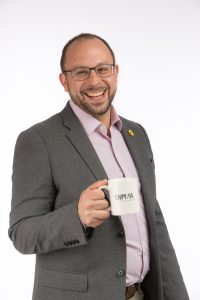By Erik Pelton

After a somewhat quiet 2016 in the world of trademarks, 2017 featured a lot to chew on for those following developments related to brand protection law. The year featured a Supreme Court trademark decision, changes to filings fees and appeal board rules from the USPTO, and many political and pop culture filings that were part of the largest increase in US trademark filings in years.
Supreme Court allows registration of ‘disparaging’ trademarks. In Matal v. Tam, a case involving the band The Slants, the Court unanimously struck down a portion of the Federal trademark statute that barred registration of disparaging trademarks because the law violated the First Amendment. The decision also meant that the 20 year old challenge to the Washington Redskins trademarks ended with the registrations intact. In December, a Federal appeals court also struck the ban on scandalous and offensive trademarks on First Amendment grounds. While brands will continue to be edgy, these cases are unlikely to affect 99% of trademark owners.
Scams continue despite warnings. Scams preying on trademark owners continued to flourish, including solicitations from outfits calling themselves Patent & Trademark Resource Center; Global Patents & Trademarks; World Organization of Trademarks; and International Patent & Trademark Agency. One scam even comes from a “Patent & Trademark Office” in New York (the real USPTO is Alexandria, Virginia). A new scam targeting Amazon Brand Registry users with trademark registrations came to light recently. In August, the USPTO held a public roundtable with other agencies including the Dept. of Justice and FTC to discuss efforts to combat these scams; whether these efforts will dent the proliferation of scams remains to be seen.
Large growth in USPTO filings. In Fiscal Year 2017, (Oct. 1, 2016 through Sept. 30, 2017), more than 425,000 new trademark applications were filed with the USPTO, an increase of more than 10% from the prior year. The US register of trademarks now contains more records than ever before, more than 2.3 million active registrations!
Newsworthy trademarks. Part of the growth can be attributed to a number of political, cultural or newsworthy events, from “making ____ great again” (dozens of variations filed) to the record flooding in Houston. In the week after the President typed “covfefe” on Twitter, at least nine trademark applications featuring the term were submitted. The fidget spinner craze in schools led to dozens of new USPTO filings featuring one or both words, and there were dozens of filings related to blockchains. I expect the trend of filings related to almost anything in the news, even though they are rarely actually used to indicate the source of a product or service, to grow even more in the coming years as technology has made the launch of a new business, especially an apparel line, quite simple easy and quick.
USPTO’s trademark technology continues to stagger. In 2010, the USPTO launched “Trademarks Next Generation” project to upgrade and modernize its software, IT, and technology both internally and for trademark applicants. While some progress has been made, the costs and delays have continued to grow. Many features common to other systems and databases are nonexistent. For example, a dearth of mobile apps or mobile pages for TESS, TSDR and more; core trademark search functions are rather complex and arcane; no visual searching; and Office Actions and TTAB opinion documents are not easily searchable.
Trademark fee changes and TTAB rule updates. A variety of trademark processing and service fees were changed effective on January 14, 2017, reducing the minimum trademark application filing cost to $225. Paper filers were impacted the most as the USPTO continues to encourage electronic processing. Ten TTAB fees changed as well. For full details, see the USPTO announcement. New TTAB rules went into effect as well impacting service of pleadings, timing of various parts of the process, methods for introducing testimony, and more. See the Federal Register Notice and chart summarizing the changes.
What to watch for in 2018? Among the trademark issues I will be tracking in the new year are the status of USPTO employee teleworking (a majority of trademark examiners work from home); whether the rate of application filing increases will continue to grow; and how increased attention paid to public interest and access to justice issues might benefit intellectual property owners.
© 2018 Erik M. Pelton & Associates, PLLC. All Rights Reserved.
Erik Pelton® has been making trademarks bloom since 1999® as the founder of Erik M. Pelton & Associates®, a boutique trademark law firm in Falls Church, Virginia. The firm has registered more than 2,500 U.S. trademarks for clients and has represented hundreds of parties in trademark disputes.
Past issues of Top Trademark Trends:
- 2016: https://www.erikpelton.com/resources/articles/top-trademark-trends-of-2016/
- 2015: https://www.erikpelton.com/2015/12/30/top-trademark-trends-of-2015-supremes-slants-swiftmas-and-more/
- 2014: https://www.erikpelton.com/2014/12/31/top-trademark-trends-of-2014/
- 2013: https://www.erikpelton.com/2014/01/13/top-trademark-trends-from-2013/
- 2012: https://www.erikpelton.com/2013/01/14/top-trademark-trends-of-2012-scams-gtlds-celebrities-and-more/
- 2011: https://www.erikpelton.com/2011/12/14/top-trademark-trends-of-2011/
- 2010: https://www.erikpelton.com/2011/06/11/top-trademark-trends-of-2010/





Pingback: Top Trademark Trends of 2022 | Erik M Pelton & Associates, PLLCErik M Pelton & Associates, PLLC